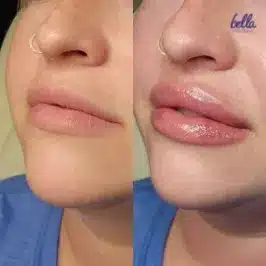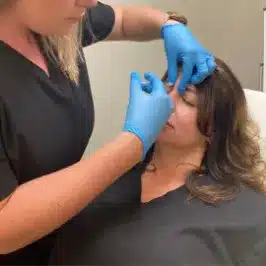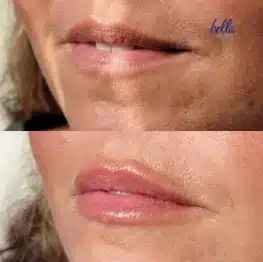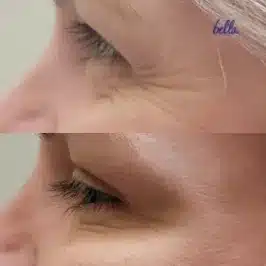Microneedling Chester Springs PA
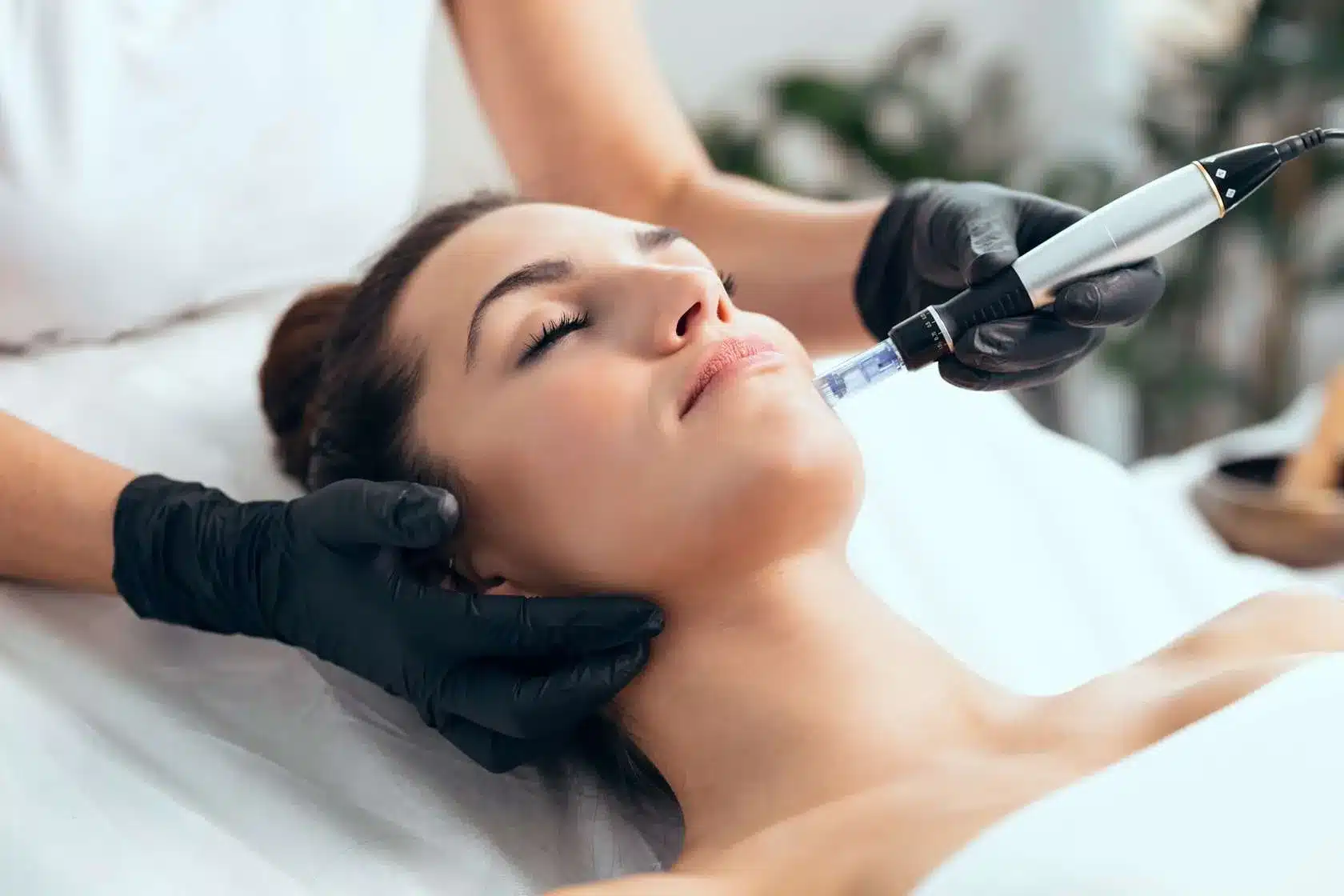
Microneedling in Chester Springs, PA at Bella Medspa
Appointments available at our offices in Philadelphia on Rittenhouse Square, Newtown (Bucks County), Chester Springs, Harrisburg, Lancaster, PA and Reading.
Microneedling punctures the skin with tiny sterilized needles, causing minor physical trauma and prompting deep layers of skin to begin rebuilding themselves.
This skin rejuvenation technique can help treat a variety of conditions, including:
- Acne scarring
- Fine lines and wrinkles
- Hyperpigmentation
- “Crepey” skin
Consultations are FREE. Call now at (484) 341-8239 to Schedule!
How Does Microneedling Work?
Microneedling causes trauma to the skin to stimulate collagen production. Collagen is an essential protein that keeps skin looking young. Collagen production naturally declines with age, so a collagen deficiency is one of the primary signs of skin aging.
At 6,000 stamps per minute, microneedling creates 66,000 micro-holes in the skin, allowing medicinal solutions to penetrate and rejuvenate skin cells. Because the trauma to the skin is minor, the skin heals in weeks and shows visible resu
Benefits of Microneedling
Microneedling’s primary benefits are skin rejuvenation and the restoration of a healthy glow that can be lost due to aging or skin damage. The treatment stimulates the body’s natural reconstructive response and increases collagen and elastin production, which promotes cell growth and the formation of new, healthy skin cells.
Microneedling is also less invasive because of the tiny needles used in the procedure. More invasive cosmetic procedures require general anesthesia and incisions, whereas this treatment does not. In addition, microneedling is associated with a significantly lower risk of complications.
While procedure times can vary depending on your response to topical numbing creams and the size of the treatment area, a microneedling session typically takes one hour. While you should avoid strenuous activity and sun exposure for a few days after your appointment, you can resume your daily activities right away.
Microneedling treatment produces rapid results. Most patients notice visible improvements within a few weeks. This rejuvenation will last for months thanks to your skin’s continued protein production.
Beyond its aesthetic benefits, microneedling is a less expensive but equally effective alternative to laser treatments. It also requires less downtime and has significantly fewer side effects.
Am I a Good Candidate for Microneedling?
Almost any healthy adult is a good candidate for microneedling, with the exception of those with dark skin. Bella Medspa typically treats skin types 1–4.
This treatment is most commonly used for acne and injury scars. Many people use it to tighten and tone “crepey” or thin skin that occurs naturally as they age.
If you have wrinkles, fine lines, or other aging-related skin conditions, the increase in collagen production caused by microneedling can fill in and smooth those lines while also restoring healthy skin texture. In addition, microneedling can treat hyperpigmentation caused by sun damage.
Microneedling is also an option for reducing the size of large pores. Providers can use the procedure to treat skin discoloration and stretch marks.
Consultation with a skilled esthetician is the best way to determine whether microneedling is a suitable treatment option for you. For safety reasons, microneedling treatments should only be performed by a licensed esthetician such as those at Bella Medspa–not at home.
Who Shouldn’t Get Microneedling Done?
During the microneedling procedure, the esthetician uses handheld technology to penetrate the skin and create microchannels. Individuals with compromised immune systems and those who are undergoing cancer treatment should avoid microneedling due to the risk of infection involved.
Though the aforementioned punctures are small, people with blood or clotting disorders should also avoid microneedling due to the risk of bleeding involved. Individuals who have conditions that result in hard, raised scarring are also not eligible for this procedure.
Microneedling is unlikely to be beneficial if you have severe acne, psoriasis, eczema, or any other serious skin concerns. Individuals with moles or skin tags are also not suitable candidates because the microneedles may cause additional dermatological damage.
How to Prepare for Microneedling Treatment
The most important step in preparing for your microneedling appointment is to follow the instructions given by your esthetician. They will provide specific guidelines based on your skin type and the treatment you’re set to receive.
It is best to avoid anything that will irritate your skin prior to your appointment. Tanning, prolonged sun exposure, and harsh exfoliants will all irritate the skin. These activities can complicate the procedure and prolong the recovery period.
If you are currently taking retinol, isotretinoin, or any other treatment for severe acne, your provider will advise you to stop for several days before your treatment. Because inflammation is part of the healing response to microneedling, your esthetician may advise you to discontinue taking over-the-counter anti-inflammatory medications too. However, you should consult your doctor before discontinuing any prescription medications.
To achieve the best results, three to six microneedling sessions spaced about a month apart are recommended. Scheduling your treatments ahead of time allows you to maximize your results and optimize your dermatological wellness.
What Happens During a Microneedling Session?
The first step in your microneedling session will be to numb the targeted areas with a topical or local anesthetic. This preparation ensures that the procedure is painless. After administering the anesthetic, your esthetician will wait up to 30 minutes to ensure that the area is numb.
Next, they’ll use a device known as a microneedling pen, which has thin needles, to make tiny punctures across the area(s) with skin damage or wrinkles. This phase of the procedure lasts about 30 minutes, depending on the size of the treatment area.
You may feel some pressure as the esthetician moves the device across your skin, but there should be no pain.
Once the microneedling is complete, the esthetician will apply a collagen-based serum to promote healing and soothe the skin in the treatment area. You will then receive detailed aftercare instructions and be able to return to your normal routine.
How Long Do Microneedling Results Last?
The longevity of your microneedling results will be determined by your overall health, the extent of the damage to the treated skin, and your genetics. Your results will last as long as your body continues to produce new collagen.
While your initial results should appear within a few weeks of your first treatment, your appearance will continue to improve for up to six months. Many patients then undergo another microneedling session to maintain their rejuvenated appearance.
What to Expect After Microneedling Treatment
Your skin will feel irritated and sensitive following your microneedling appointment. Some patients say their skin feels dry or tight. Others report it being red and tender.
We recommend using only gentle cleansers, moisturizers, and serums following your treatment. To optimize your microneedling results, use sunscreen, avoid sun exposure, and limit your use of anything that may irritate your skin.
By the fifth day of your recovery, the tiny punctures from the treatment will have healed completely. After that, you’ll be able to resume your normal skincare routine and return to wearing makeup. Still, you should avoid harsh treatments such as chemical peels.
Some people experience peeling and itching as new skin emerges to replace damaged cells. Be sure to avoid scratching or picking at your skin, as this can slow down the healing process and compromise your results.
In the months following your treatment, your skin will continue to tighten and glow as your increased collagen production generates new cells and strengthens the anatomical structures that support your facial skin.
How Many Treatments Will I Need?
To achieve optimal results, most microneedling patients require three to six treatment sessions spaced about four to six weeks apart.
Is Microneedling Safe?
Studies have proven microneedling to be safe and effective at improving skin health when performed with professional equipment.
The microneedling pen’s automated vibrating function protects users from unnecessary epidermal damage. Furthermore, this function enhances the treatment’s effectiveness by increasing the absorption of skin care products.
Side Effects of Microneedling
While microneedling is considered minimally invasive, all treatments have side effects. The most common side effects of microneedling are skin irritation and sensitivity. The punctures are small, but they do cause some damage. As a result, your skin may appear red and irritated for up to 72 hours following the procedure. Some people also experience skin peeling as they recover.
More serious side effects include bleeding, bruising, and infection, but these are uncommon and abnormal. They are usually only seen when untrained providers perform microneedling with improper equipment and sterilization techniques.
Clinical Research Supporting Microneedling
A number of well-designed clinical studies have demonstrated the effectiveness of microneedling, including:
- A systematic review published in 2018 concluded that microneedling is both safe and effective for improving skin health. The researchers stated that microneedling can rejuvenate the skin and improve the state of scars and wrinkles.
- A press release published by the American Academy of Dermatology stated that microneedling can reduce the appearance of fine lines, wrinkles, and scars.
Our Medical Director
All medical services are overseen by our medical director, Dr. Appel who has over 10 years experienced in medical aesthetics field.


